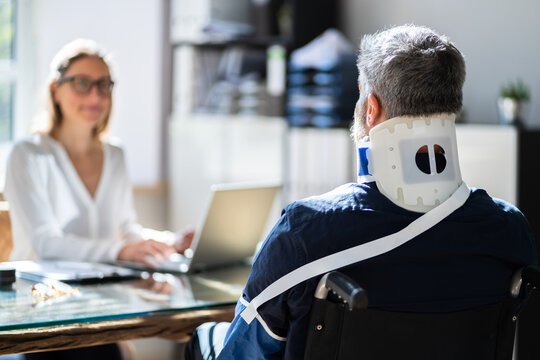When someone is injured in a car accident, the road to fair compensation involves more than just pointing fingers or filling out paperwork. It often requires a deep understanding of how injuries affect the body, how they are caused, and what the long-term consequences might be. Attorneys don’t navigate this journey alone. They often collaborate with medical professionals to validate claims, explain injuries, and connect the dots between the crash and the client’s physical condition.
This collaboration plays a crucial role in ensuring that the injured receive what they are truly entitled to. We will explore how legal professionals collaborate with medical practitioners to present a compelling case, not only in negotiations with insurance companies but also in court proceedings before juries.
For those seeking more on Orlando auto accident attorney support, understanding this legal-medical alliance is key to recognizing how strong claims are built. The synergy between law and medicine forms the backbone of many successful injury claims, making this relationship a crucial component of modern legal strategies.
Key Ways Attorneys Collaborate with Medical Professionals in Car Accident Cases
1. Establishing a Clear Link Between the Accident and the Injuries
One of the first challenges in any personal injury case is proving that the injuries were directly caused by the car accident in question. Insurance companies frequently argue that a claimant’s injuries existed before the crash or were not severe enough to warrant the requested compensation. To combat this, attorneys consult medical professionals who can carefully review records, diagnostic images, and treatment histories to create a timeline that supports the victim’s account.
By correlating the onset of symptoms with the date of the accident, medical practitioners help establish causation. Attorneys may also ask for written opinions or sworn testimony to show that the injuries were consistent with trauma typical in auto collisions. Without this step, the legal team risks presenting a claim that seems vague or speculative. This is why a documented medical evaluation, conducted soon after the incident, becomes a cornerstone of the legal strategy.
2. Demonstrating the Severity and Long-Term Impact of the Injuries
Once the connection between the accident and the injury is clear, the next step involves illustrating the severity of the injuries and the lasting impact they will have. Medical professionals provide detailed reports that outline the extent of physical harm, recovery timelines, and future medical needs. These reports often include imaging scans, surgical records, rehabilitation schedules, and prescription histories. For clients suffering from long-term or permanent disability, the medical voice becomes vital in projecting future costs and lifestyle limitations.
Attorneys rely on this information to calculate damages beyond current medical bills. Pain and suffering, loss of earning capacity, and diminished quality of life are all categories that hinge on a convincing picture of how the injury will affect the victim over time. Without credible input from doctors, therapists, and other healthcare providers, these projections may appear inflated or unfounded during negotiations or trials.
3. Providing Objective and Trustworthy Testimony in Court
Should a case proceed to court, attorneys often call upon medical witnesses to explain injuries in a way that jurors can understand. These witnesses are not there to advocate for the plaintiff but to offer neutral, fact-based insights. Their credibility adds weight to the attorney’s narrative, especially when insurance companies present their version of events backed by different interpretations. Medical witnesses may use visual aids, such as anatomical models or imaging slides, to demonstrate how the injury occurred and the type of internal damage sustained.
They can explain complex conditions like spinal trauma or traumatic brain injuries in a way that resonates with jurors who have no medical background. Their calm, scientific explanations can neutralize any attempts by the defense to minimize the injury’s significance. Attorneys often spend time preparing these witnesses to ensure their presentation is both accurate and easy to follow, aligning closely with the overall legal strategy.
4. Supporting the Timeline and Treatment Consistency
Timing and consistency are two factors that insurance adjusters and defense attorneys often scrutinize. If there’s a gap between the date of the accident and the date medical treatment began, questions may arise about whether the injury was related to the crash at all. Attorneys collaborate with medical providers to review treatment records and ensure a logical, documented progression from the initial injury to ongoing care. Medical professionals may also confirm whether the treatment path taken was reasonable, based on the type and severity of the injury.
For example, if physical therapy was prescribed but not followed, or if surgery was delayed, these choices might be used against the plaintiff unless properly explained. Lawyers and doctors collaborate to ensure that the treatment history supports the claim rather than undermines it. This partnership helps fill in any potential gaps and strengthens the overall consistency of the narrative being presented.
When it comes to proving car accident injuries, attorneys don’t work in a vacuum—they rely on trusted relationships with medical professionals to make their cases as strong as possible. From establishing the cause of the injury to projecting future consequences and quantifying damages, this collaboration forms the framework for many successful outcomes. By translating complex medical facts into persuasive legal arguments, attorneys and medical professionals ensure that injury victims have a fair chance at receiving the compensation they deserve.
We have explored how this partnership strengthens each phase of a legal claim, from the initial assessment through courtroom testimony. Whether a case settles quickly or proceeds to trial, the combined efforts of legal and healthcare professionals provide injured individuals with a voice—and, more importantly, a path to justice that is grounded in both truth and credibility.
